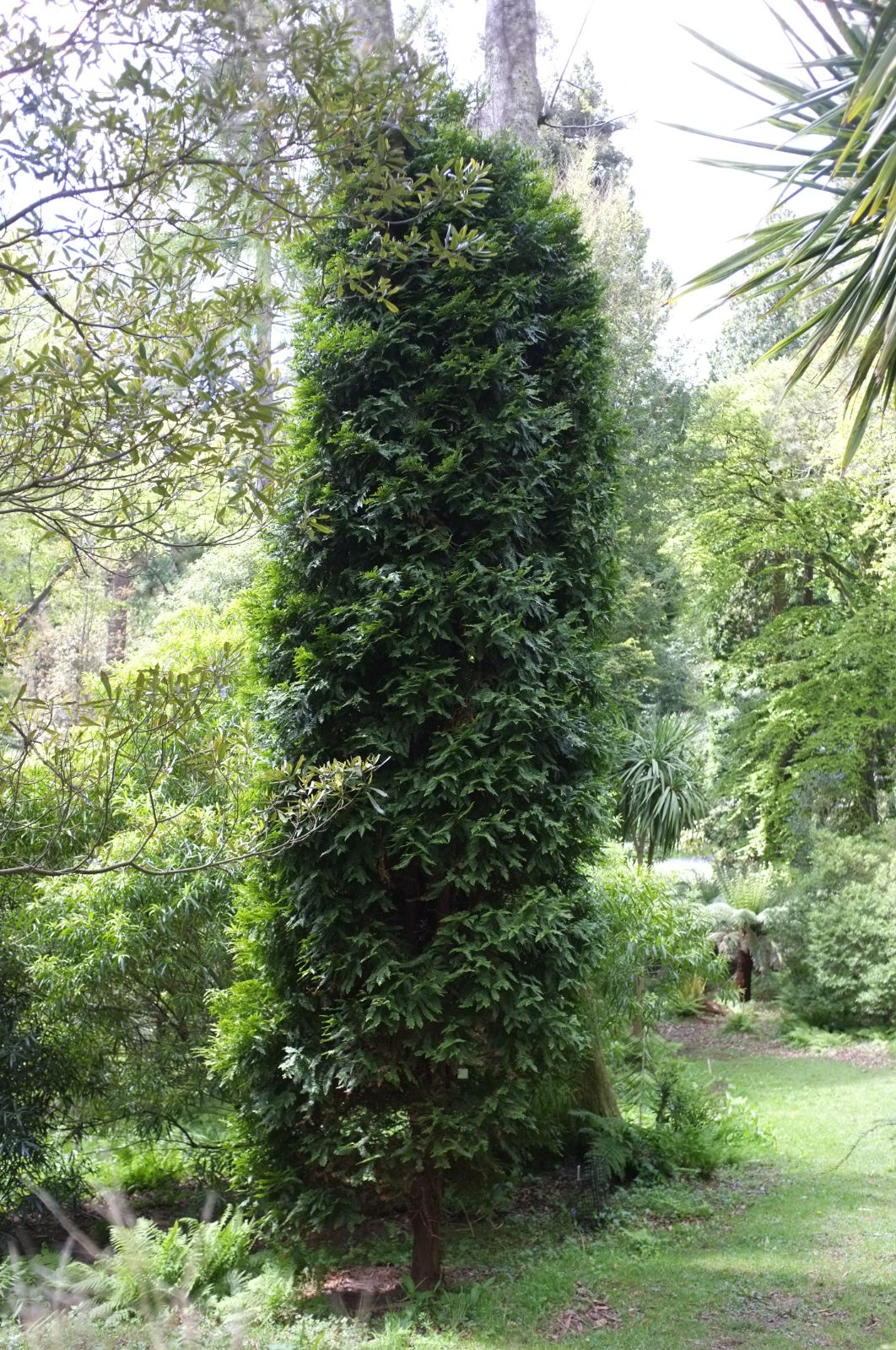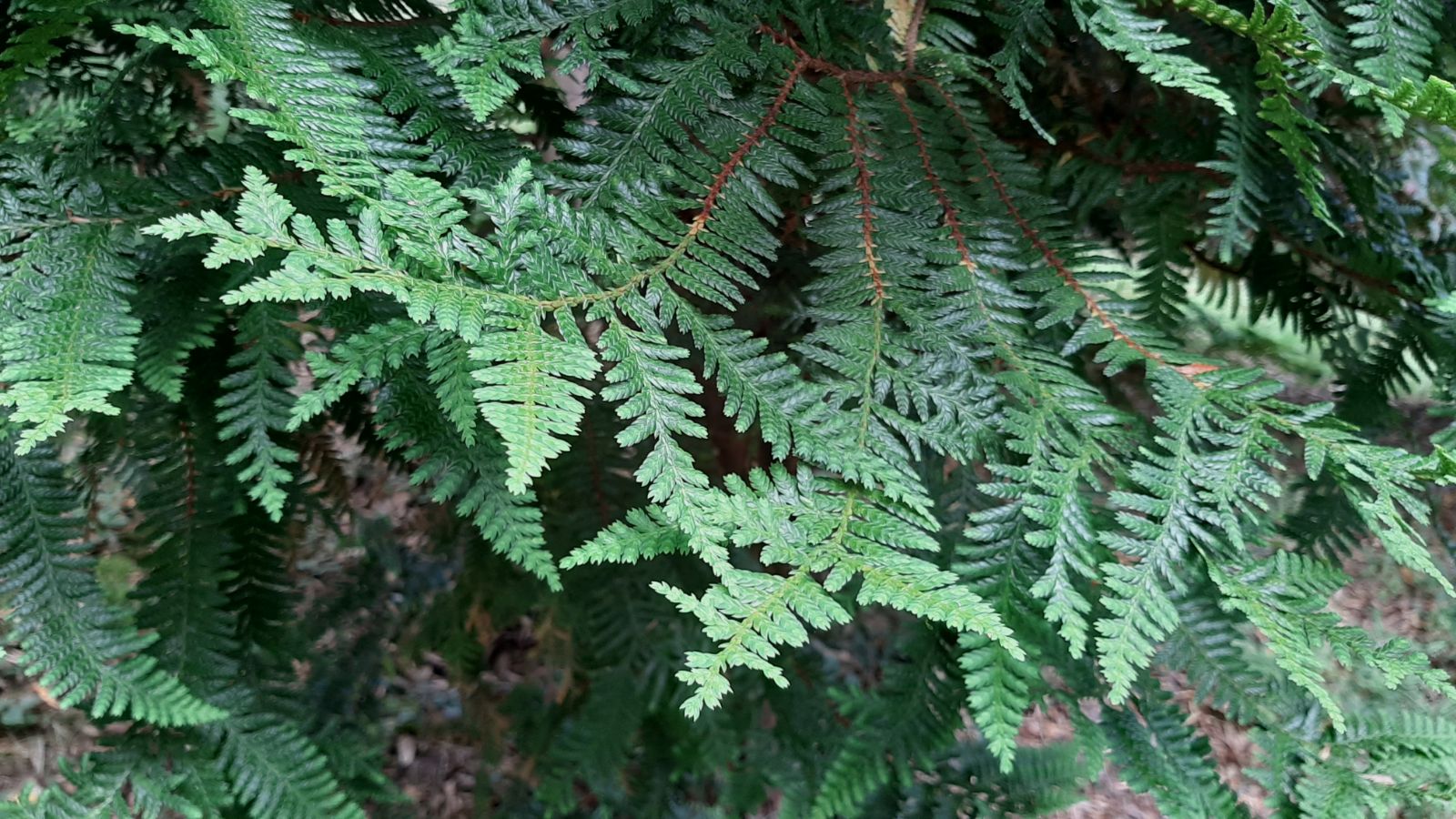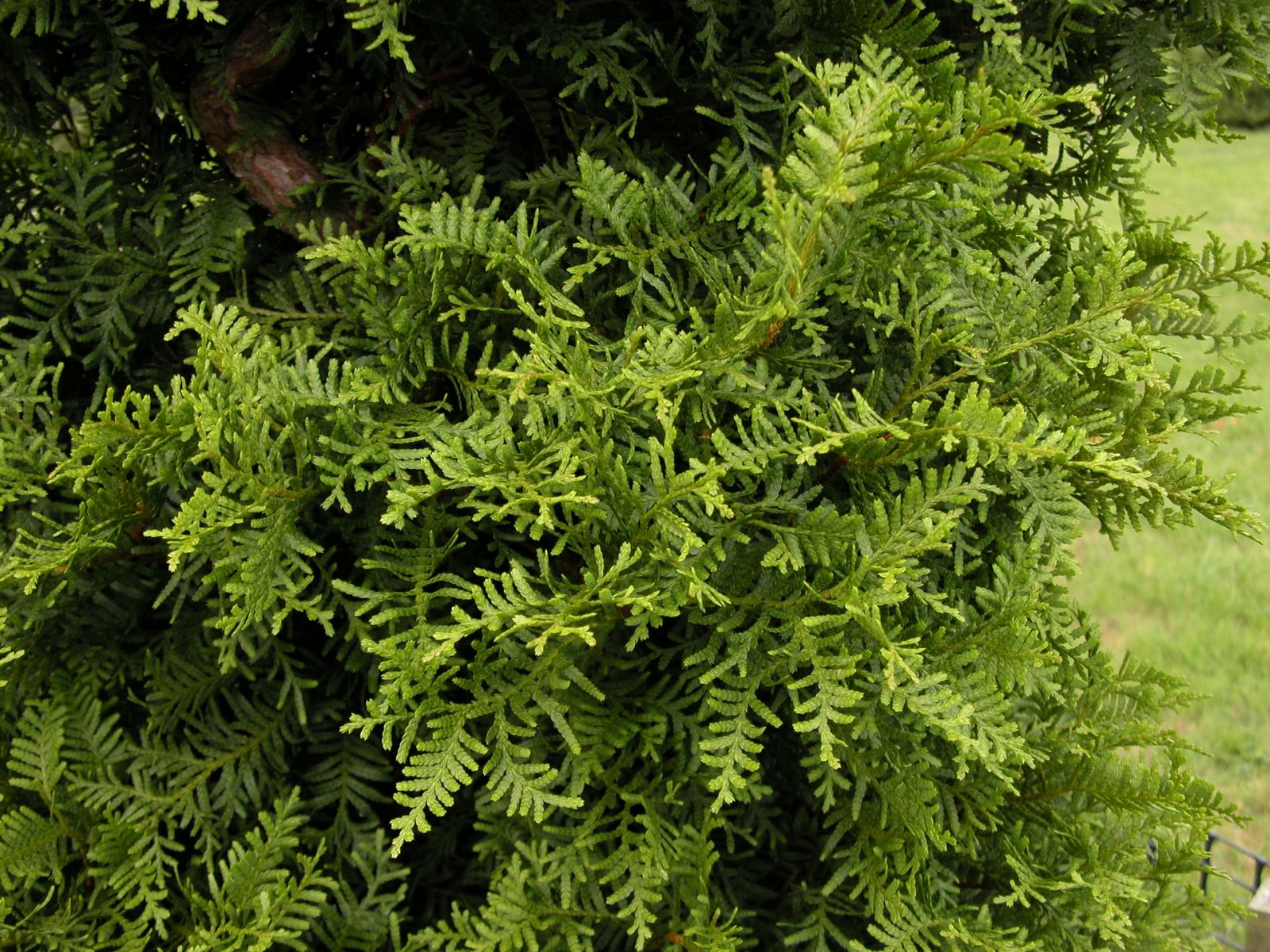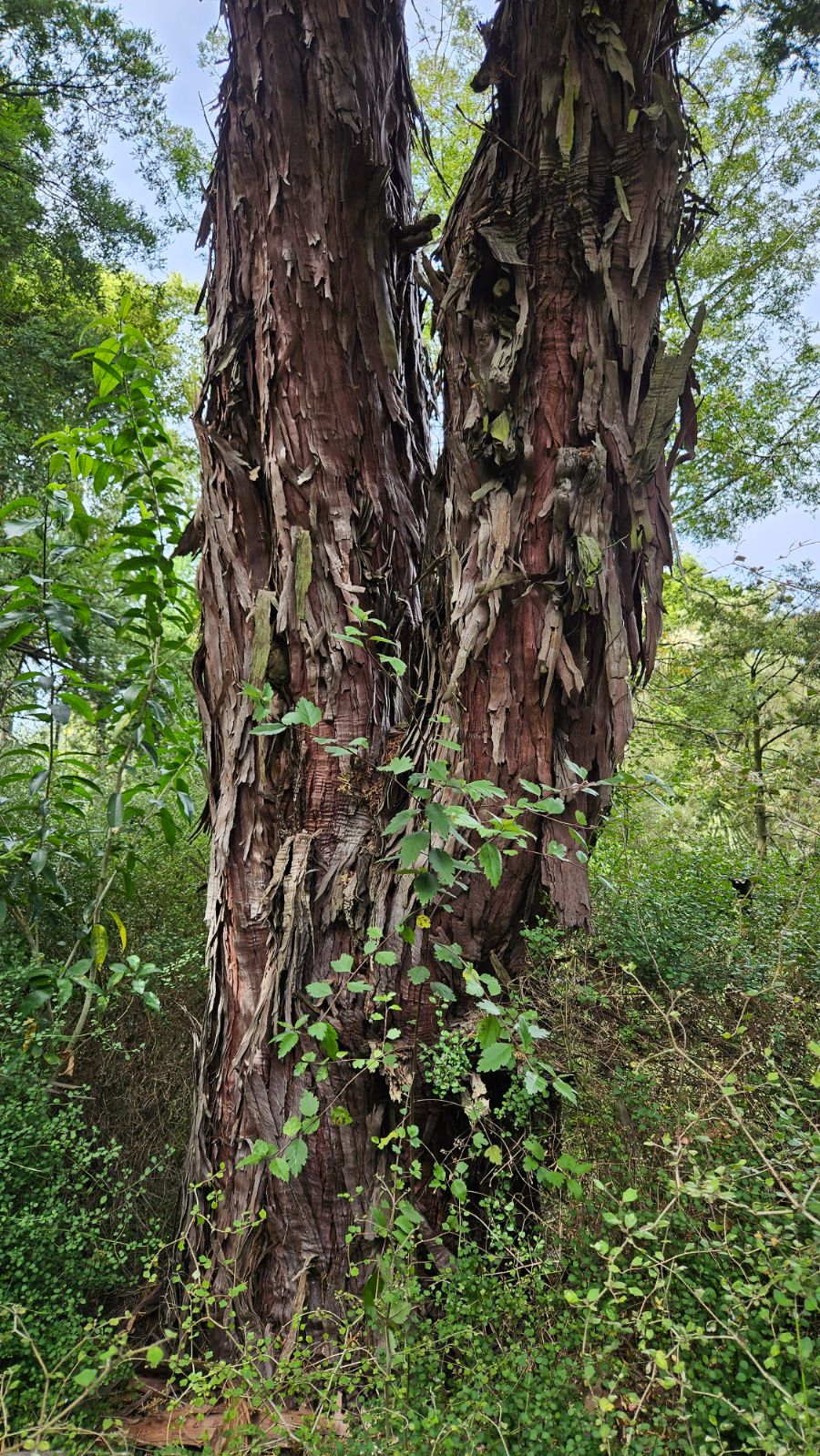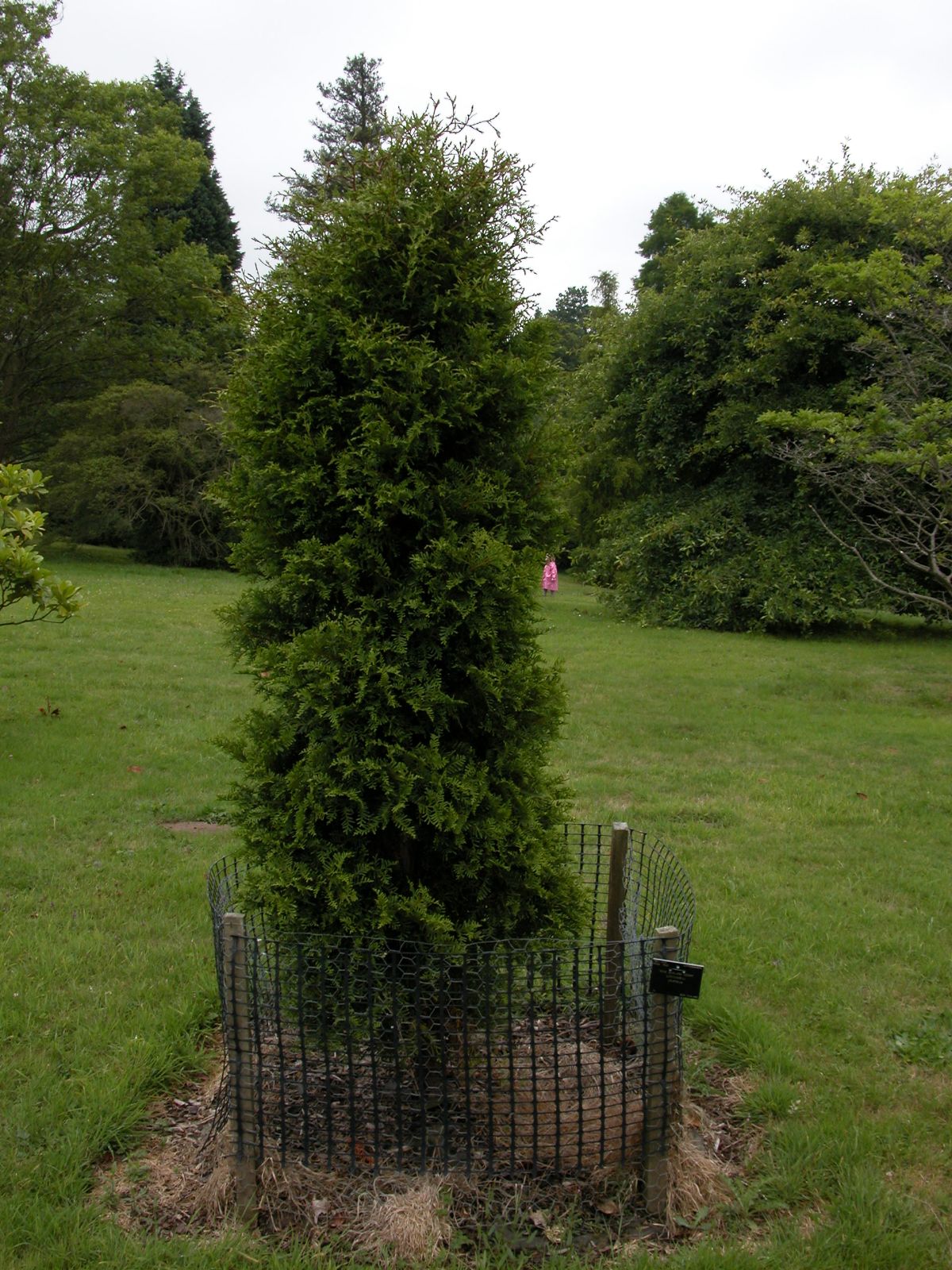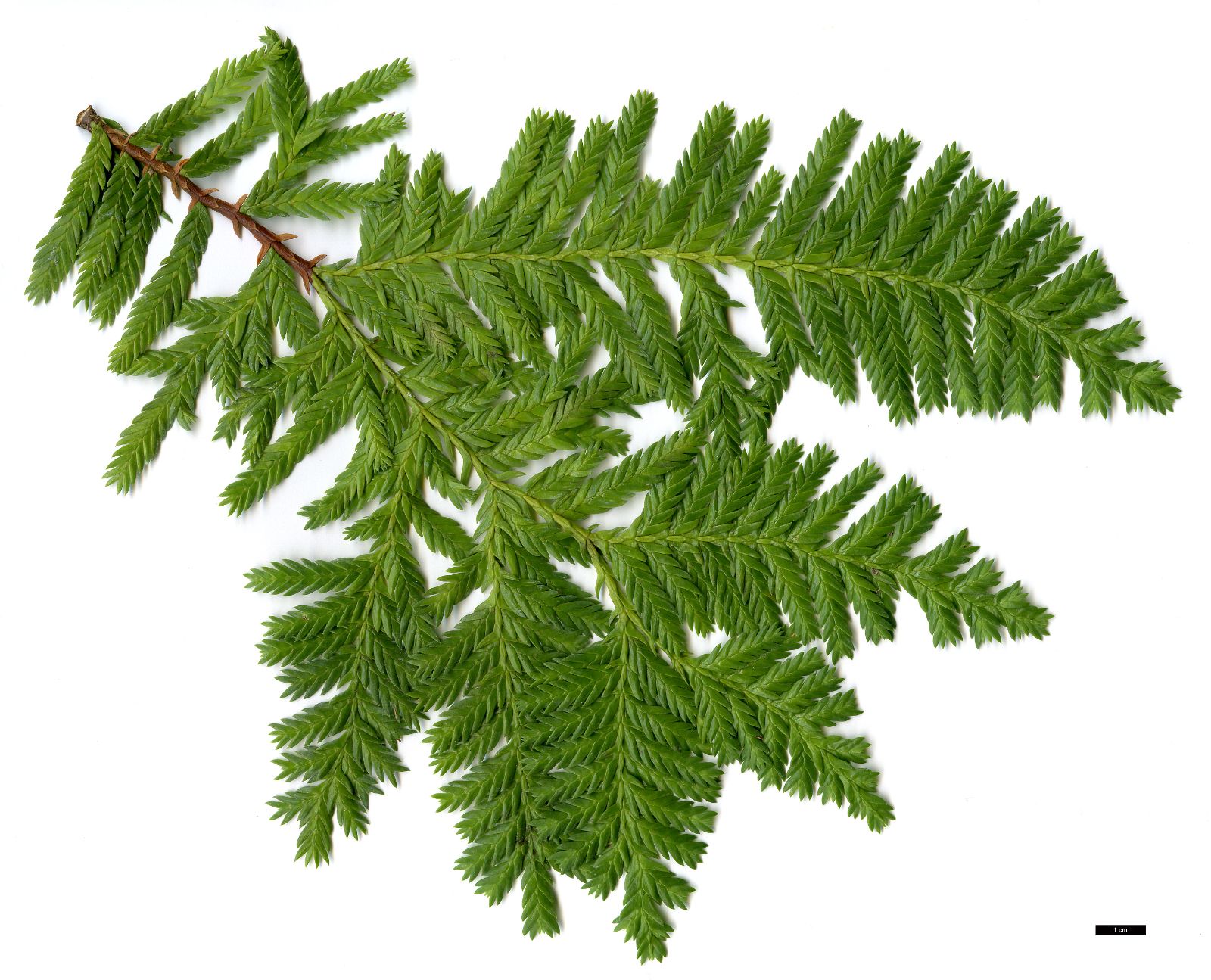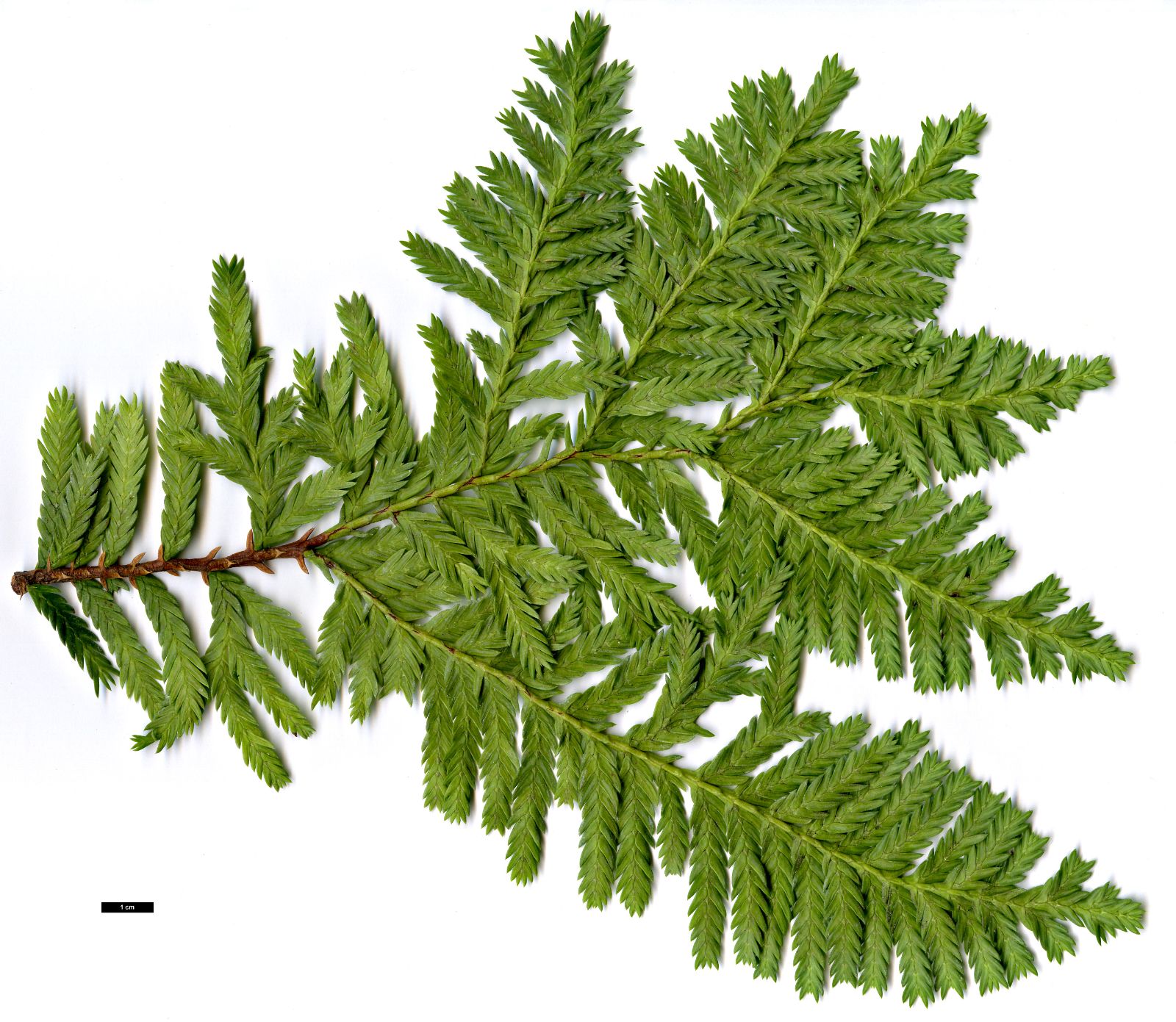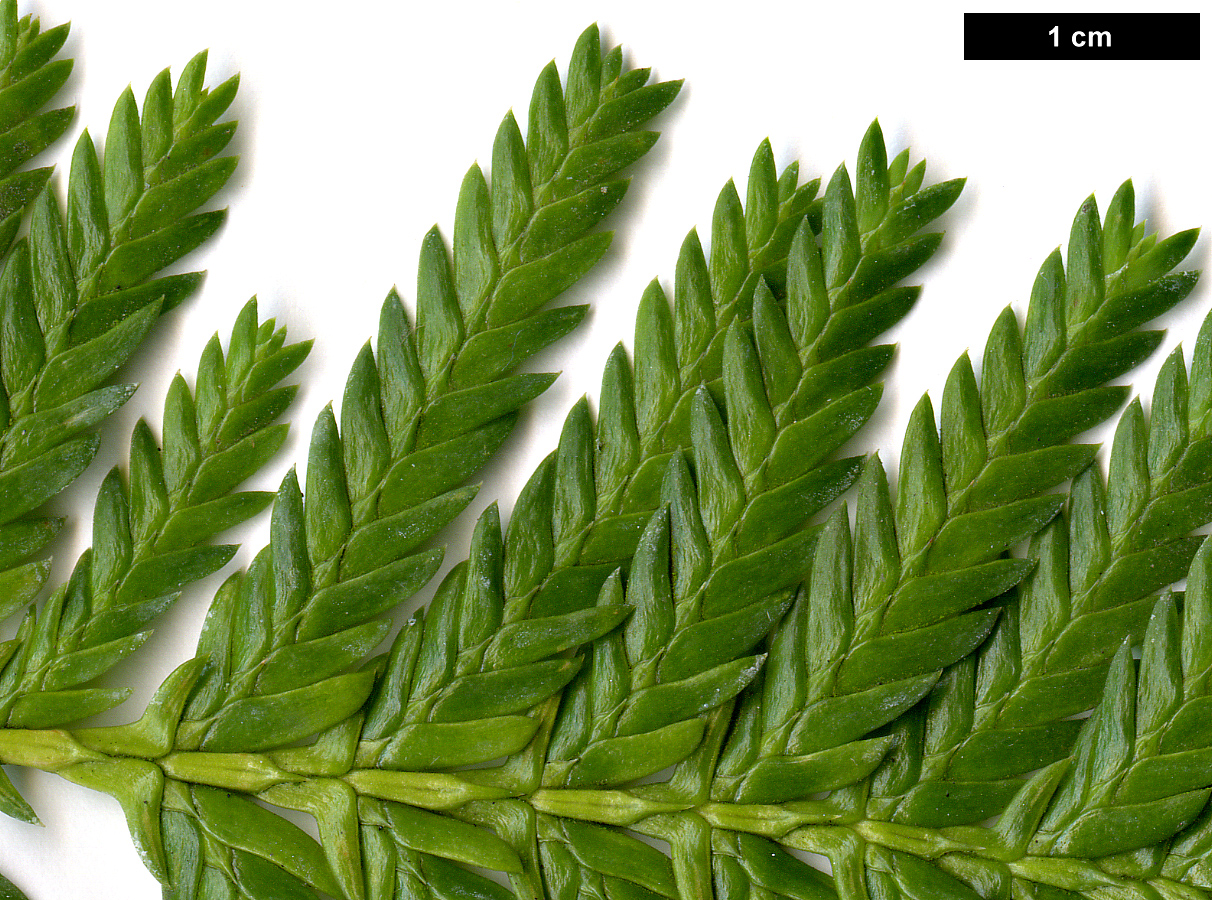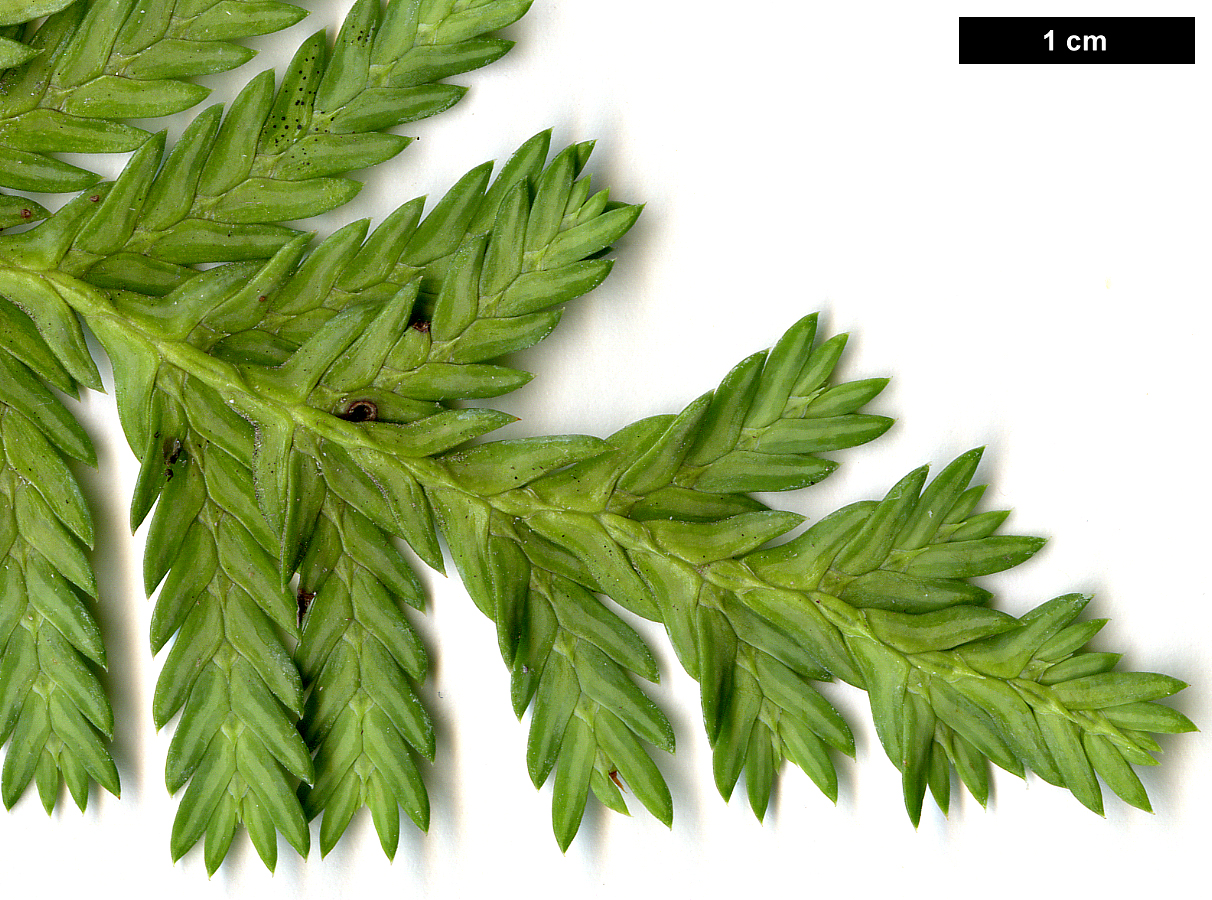Libocedrus plumosa
Credits
Article from Bean's Trees and Shrubs Hardy in the British Isles
Recommended citation
'Libocedrus plumosa' from the website Trees and Shrubs Online (treesandshrubsonline.
Genus
Synonyms
- Dacrydium plumosum D. Don
- Thuja doniana Hook.
- L. doniana (Hook.) Endl.
An evergreen tree 30 to 70 ft high, with a trunk 6 to 13 ft in girth, the bark falling away in long, thin ribbons. In the young state the ultimate branchlets are flat, arranged in two opposite rows, 1⁄2 to 1 in. long, and (with the leaves) about 1⁄6 in. wide. Leaves in four rows as in Thuja, the side ones 1⁄8 to 1⁄5 in. long, flattened to form a keel, pointed, overlapping the small upper and lower ones, of which only the quite small triangular tips are exposed. In the adult state (as with many New Zealand conifers), the branchlets and leaves are quite different; the distichous (two-rowed) arrangement of the branches is not so conspicuous and they are narrower, about 1⁄12 in. wide, less flattened, with the leaves proportionately smaller, blunter, and more equal in size. Cones egg-shaped, 1⁄2 in. long, composed of four scales, each having a pointed curved spine nearly 1⁄4 in. long at the back.
Native of New Zealand on both islands, but more frequent on the North, where it is said to be often rare and local; discovered in the Bay of Islands by Robert Cunningham in 1833. Kirk describes it as a noble tree. We know it only in a small state in cultivation, but it is a handsome conifer of the thuja type. There is an example measuring 16 × 1 ft at Wakehurst Place, Sussex (1971).
L. bidwillii Hook. f. – This is often confused with L. plumosa, but differs in the juvenile state from that species in the branchlets being narrower, and still more in the adult state when they become distinctly four-sided and 1⁄15 to 1⁄12 in. wide, with the leaves almost uniform, triangular, pointed, cypresslike, and closely pressed to the stem. Cones as in L. plumosa, but only 1⁄4 to 1⁄3 in. long. It is an evergreen tree, rarely more than 50 ft high. As it reaches altitudes of 3,000 to 4,000 ft in New Zealand it should be hardy with us. There is a healthy plant at Nymans in Sussex, 26 × 2 ft (1970), and another of about the same size at Blackmoor, Hants.
From the Supplement (Vol. V)
specimens: Wakehurst Place, Sussex, 20 × 11⁄4 ft at 4 ft (1974); National Pinetum, Bedgebury, Kent, 18 × 1 ft (1979); Bodnant, Gwyn., 18 × 3⁄4 ft (1981).
L. bidwillii – specimens: Nymans, Sussex, 30 × 21⁄4 + 2 ft (1983); Bodnant, Gwyn., 21 × 21⁄2 ft (1981).

